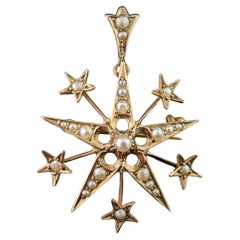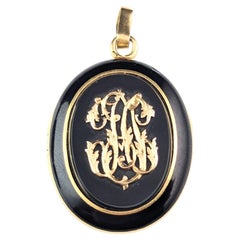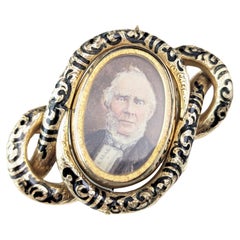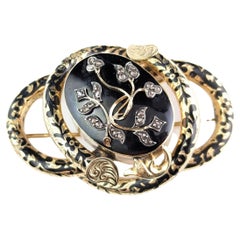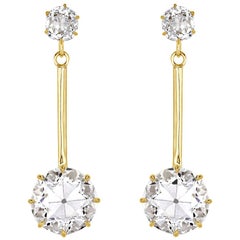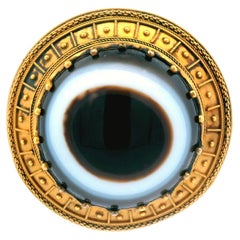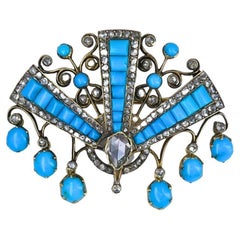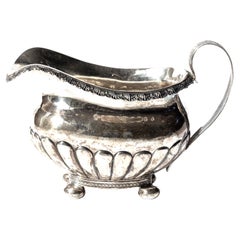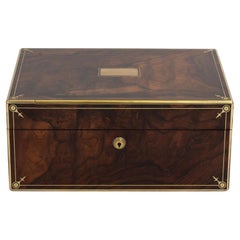Antique Jewelry Marks
Early 20th Century British Edwardian Antique Jewelry Marks
Pearl, 9k Gold, Yellow Gold
19th Century French Victorian Antique Jewelry Marks
Onyx, Gold, 18k Gold, Yellow Gold
19th Century British Victorian Antique Jewelry Marks
15k Gold, Yellow Gold, Enamel
19th Century British Victorian Antique Jewelry Marks
Diamond, Enamel, Yellow Gold, 9k Gold, 15k Gold
1920s Antique Jewelry Marks
1880s Victorian Antique Jewelry Marks
Agate, Gold, 18k Gold, Yellow Gold
Early 1900s Unknown Antique Jewelry Marks
Diamond, Turquoise, 18k Gold, Yellow Gold
Early 20th Century English Art Deco Antique Jewelry Marks
Silver, Sterling Silver
Early 19th Century English William IV Antique Jewelry Marks
Brass
Mid-19th Century Irish High Victorian Antique Jewelry Marks
Brass
Early 20th Century Chinese Antique Jewelry Marks
19th Century Chinese Antique Jewelry Marks
19th Century Chinese Antique Jewelry Marks
Late 19th Century English Edwardian Antique Jewelry Marks
Brass
Late 19th Century Russian Antique Jewelry Marks
Amethyst, Diamond, Gold, 14k Gold
19th Century Etruscan Revival Antique Jewelry Marks
Gold, 22k Gold
Early 20th Century British Art Deco Antique Jewelry Marks
Diamond, Ruby, Sapphire, 18k Gold
Early 20th Century Austrian Victorian Antique Jewelry Marks
Aquamarine, Diamond, Sapphire, Zircon, Silver, Sterling Silver
1820s British Romantic Antique Jewelry Marks
18k Gold
1870s French Antique Jewelry Marks
Oriental Pearl, Turquoise, Gold, Silver, Enamel
Early 20th Century Russian Edwardian Antique Jewelry Marks
Emerald, Ruby, 18k Gold, Silver, Enamel
Late 19th Century European Art Nouveau Antique Jewelry Marks
Opal, Gold, 9k Gold, Yellow Gold, Silver
Early 20th Century British Art Deco Antique Jewelry Marks
Diamond, 9k Gold, Rose Gold
Early 1900s North American Edwardian Antique Jewelry Marks
Diamond, Pearl, White Diamond, Natural Pearl, Gold, Yellow Gold, Enamel,...
1920s Art Deco Antique Jewelry Marks
Gold, 18k Gold, White Gold
Early 1900s American Edwardian Antique Jewelry Marks
Pearl, White Diamond, Diamond, Enamel, Yellow Gold, 14k Gold, Gold
1860s Victorian Antique Jewelry Marks
Diamond, Gold, 14k Gold, Yellow Gold, Silver
Early 20th Century Russian Russian Revival Antique Jewelry Marks
Ruby, Silver, Gilt Metal
Early 1900s Austrian Renaissance Revival Antique Jewelry Marks
Pearl, Citrine, 18k Gold, Silver
18th Century Antique Jewelry Marks
1920s Austrian Renaissance Revival Antique Jewelry Marks
Pearl, Turquoise, Silver
1910s Austrian Renaissance Revival Antique Jewelry Marks
Pearl, Garnet, Gold-filled, Silver, Enamel
Mid-19th Century British Victorian Antique Jewelry Marks
Multi-gemstone, Silver, Brass
Early 1900s Chinese Chinese Export Antique Jewelry Marks
Silver
1910s German Art Deco Antique Jewelry Marks
Silver, Sterling Silver, Enamel
19th Century English Victorian Antique Jewelry Marks
Silver Plate, Bronze
Early 1900s Italian Antique Jewelry Marks
1890s French Art Nouveau Antique Jewelry Marks
18k Gold
Late 19th Century British Victorian Antique Jewelry Marks
Diamond, 14k Gold
Early 20th Century French Edwardian Antique Jewelry Marks
Silver, 9k Gold
1920s French Art Deco Antique Jewelry Marks
Diamond, Platinum
Early 20th Century French Art Deco Antique Jewelry Marks
Diamond, Onyx, Platinum
1860s Victorian Antique Jewelry Marks
Carnelian, 18k Gold
Early 19th Century French Georgian Antique Jewelry Marks
Garnet, Sterling Silver
1920s French Neoclassical Antique Jewelry Marks
Gold
Early 20th Century Danish Art Nouveau Antique Jewelry Marks
Silver
Early 20th Century American Edwardian Antique Jewelry Marks
Sapphire, Platinum
Early 20th Century American Edwardian Antique Jewelry Marks
Diamond, Platinum
1920s American Art Deco Antique Jewelry Marks
Diamond, Tourmaline, Paraiba, 18k Gold, White Gold
1920s American Art Deco Antique Jewelry Marks
Paraiba, Diamond, Tourmaline, 18k Gold, White Gold
Early 20th Century American Edwardian Antique Jewelry Marks
Sapphire, 18k Gold, White Gold
Late 19th Century Unknown Victorian Antique Jewelry Marks
10k Gold, Yellow Gold
Late 19th Century American Victorian Antique Jewelry Marks
Diamond, 18k Gold, Platinum
1920s French Antique Jewelry Marks
18k Gold
Late 19th Century Unknown Victorian Antique Jewelry Marks
Diamond, 18k Gold
1870s Italian Antique Jewelry Marks
14k Gold, Sterling Silver
Early 20th Century British Art Deco Antique Jewelry Marks
Diamond, 9k Gold, Yellow Gold, Platinum
Early 20th Century Art Nouveau Antique Jewelry Marks
Diamond, White Diamond, Pearl, Freshwater Pearl, Gold, 14k Gold, Yellow ...
1870s Italian Victorian Antique Jewelry Marks
18k Gold
Early 1900s American Antique Jewelry Marks
14k Gold
- 1
Antique Jewelry Marks For Sale on 1stDibs
How Much are Antique Jewelry Marks?
- Can fake jewelry have markings?1 Answer1stDibs ExpertNovember 1, 2023Yes, fake jewelry can have markings. Jewelry produced out of materials other than precious metals and real gemstones may still have a brand hallmark stamped somewhere on it, as many fashion jewelry makers add their logos to their pieces. Fake jewelry that is a replica of authentic fine jewelry may also bear a maker's mark to make the reproduction more convincing. However, these fraudulent hallmarks often aren't identical to the genuine markings, and noticing this difference can help you spot fakes being passed off as genuine pieces. Explore a large collection of jewelry on 1stDibs.
- 1stDibs ExpertNovember 6, 2023Yes, some vintage jewelry has markings. Makers may have stamped pieces with hallmarks to represent the types of metals used in them and/or to signify that they came from certain brands. However, not all vintage jewelry is marked. On 1stDibs, shop a wide range of vintage jewelry from some of the world's top dealers.
- Is Monet jewelry marked?1 Answer1stDibs ExpertMarch 22, 2022Yes, Monet jewelry is marked, but the hallmark employed by the brand has changed greatly over the years. During the 1920s and 30s, most pieces said "Monocraft." Later, the company used "Monet," "Monet Jewelers," and "Monet Sterling." Pieces after 1955 feature the brand name and a copyright symbol. On 1stDibs, shop a selection of vintage Monet jewelry.
- 1stDibs ExpertFebruary 13, 2023One way to identify jewelry markings is to use trusted online resources. You can enter a description of the markings in a search engine to get results, whether they are serial numbers, a brand’s maker’s marks, or some other inscription that may appear on an accessory’s inner band or clasp. Ultimately, you’ll likely want to work with a certified appraiser who specializes in jewelry to accurately identify your jewelry’s markings. Shop a collection of vintage and designer jewelry from some of the world's top jewelers on 1stDibs.
- 1stDibs ExpertApril 5, 2022Yes, Trifari was always diligent in marking its jewelry, and the mark has evolved over the years. There were a few pieces in the early years that went unmarked, but those pieces are extremely rare. Costume jewelry maker Trifari is widely beloved for its fine craftsmanship and complex designs for necklaces, brooches and other accessories. On 1stDibs, you can find a collection of authentic Trifari jewelry pieces from some of the world’s top sellers.
- 1stDibs ExpertAugust 26, 2024Jewelry marked Mexico may be real silver. The Taxco area of Mexico is particularly well known for producing sterling silver jewelry, and pieces from the area often feature a "Taxco" marking. Genuine silver pieces produced anywhere in the country may also bear other hallmarks, such as 925 or sterling. If you'd like help identifying your jewelry's materials, consult a certified appraiser or experienced jeweler. Find a range of sterling silver jewelry on 1stDibs.
- 1stDibs ExpertNovember 13, 2024To identify antique clockmakers' marks, try taking a photo with your mobile device. A reverse image search may turn up a match that will allow you to make a positive identification. If not, type a description of the marking into a search engine or review image guides and other references published on trusted online resources. Alternatively, you can use the services of a certified appraiser or experienced antique dealer. Find a wide variety of antique clocks on 1stDibs.
- 1stDibs ExpertNovember 4, 2024To identify antique jewelry, first try to locate any maker's markings. These may be found in a variety of inconspicuous locations, such as the insides of rings, the clasps of bracelets and chains and the backs of clip-on earrings, pendants and brooches. You can find trustworthy online reference guides that make searching for makers using their hallmarks easy. Once you have determined who produced your jewelry, learn about the creator and estimate approximately when they made your item. If your jewelry is at least 100 years old, it is antique. Alternatively, a certified appraiser or knowledgeable antique dealer can assist in dating your jewelry. Find a wide range of antique jewelry on 1stDibs.
- 1stDibs ExpertApril 26, 2024To tell if jewelry is antique, look for its hallmarks. You will usually find them in inconspicuous areas, such as on clasps, the backs of pendants or the insides of bracelets and rings. Once you have located the hallmarks, use trusted online resources to identify the maker and find out when they were active. Pieces produced more than 100 years ago are antique. If you need assistance dating a particular piece, enlist the services of a certified appraiser or knowledgeable antiques dealer. Find a large collection of antique jewelry on 1stDibs.
- What is antique paste jewelry?1 Answer1stDibs ExpertOctober 12, 2021Paste jewelry is made out of a special type of flint glass that emulates several gemstones. Paste is a hand-cut glass that is polished with metal powder until it gleams like a gem. Paste jewelry was popular as a cheaper alternative to diamonds during the Georgian, Victorian, and Edwardian eras, as well as the Art Deco period. On 1stDibs, find a variety of antique and vintage paste jewelry.
- 1stDibs ExpertMay 5, 2023To know if your antique jewelry is valuable, you can consult trusted online resources to see what similar pieces have sold for in the past. It is important to note that the condition of your specific piece will have a major effect on how much it is worth. Jewelry of a certain historical period will be worth more to collectors than accessories from other less noteworthy eras, and whether or not a given accessory is set with a precious gemstone may affect its value as well. You may wish to have the jewelry evaluated by a certified appraiser who can examine the piece and give you a price estimate. Master jewelry designers and luxury houses of the 19th and 20th centuries include Cartier, Tiffany & Co., Van Cleef & Arpels, BVLGARI and others. Shop a collection of jewelry from some of the world’s top sellers on 1stDibs.
- 1stDibs ExpertDecember 12, 2023To tell if jewelry is vintage or antique, first look for any hallmarks that signify its maker. You can use trusted online resources to research when the maker was active and producing pieces similar to yours to roughly estimate its age. Jewelry is vintage if it's between 20 and 99 years old, and antique if it is 100 years old or more. If you're unable to locate a maker's hallmark, becoming familiar with the materials and other characteristics used during different eras of jewelry can help you date your piece. When in doubt, enlist the help of a certified appraiser or knowledgeable dealer. On 1stDibs, explore a large collection of vintage and antique jewelry.
- 1stDibs ExpertMay 5, 2023Yes, some antique jewelry does go up in value. It is important to note that demand as well as the condition of your specific piece will have a major effect on how much it is worth. A certain historical period’s jewelry may be worth more to collectors than accessories from other less noteworthy eras, and whether or not a given accessory is set with precious gems may affect its value as well. You may wish to have the jewelry evaluated by a certified appraiser who can examine the piece and estimate its value. Master jewelry designers and luxury houses of the 19th and 20th centuries include Cartier, Tiffany & Co., Van Cleef & Arpels, BVLGARI and others. On 1stDibs, shop a large collection of jewelry from some of the world’s top sellers.
- 1stDibs ExpertApril 5, 2022To tell if jewelry is antique gold, take it to a licensed appraiser experienced in evaluating jewelry. It is difficult to identify jewelry materials using only the naked eye and online resources. On 1stDibs, shop a collection of expertly vetted gold jewelry.
- Is antique jewelry worth money?1 Answer1stDibs ExpertSeptember 9, 2024Yes, some antique jewelry is worth money. Precious metals and gemstones like platinum, gold, silver, diamonds and emeralds have value on their own. Even costume jewelry made of less expensive materials may prove valuable due to its style or maker. Because the condition also impacts the potential value of antique pieces, you may wish to have your jewelry evaluated by a certified appraiser or knowledgeable antique dealer. On 1stDibs, find a wide range of antique jewelry.
- 1stDibs ExpertApril 5, 2022In antique jewelry, the term “paste” means glass finished in a way that allows it to resemble natural gemstones. To produce paste, artisans polish it for long periods of time with metal powder. On 1stDibs, find a selection of antique paste jewelry.
- 1stDibs ExpertNovember 6, 2023Jewelry is considered antique once it is 100 years old. Pieces that are 20 to 99 years old are vintage. Contemporary is the term used to describe jewelry that is less than 20 years old. Explore a large selection of antique, vintage and contemporary jewelry from some of the world's top dealers on 1stDibs.
- 1stDibs ExpertDecember 4, 2023To tell if antique jewelry is real, first look for hallmarks that may signify the maker. You can then use trusted online resources to find out what to look for to verify authenticity. If the jewelry doesn't have hallmarks, you may wish to consult a certified appraiser or licensed dealer. An expert can evaluate your jewelry, tell you whether it is a genuine antique and provide information about its materials and approximate value. Explore a large selection of antique jewelry on 1stDibs.
- 1stDibs ExpertAugust 29, 2024To tell if antique jewelry is real gold, you can first perform a simple home test. Position a magnet near the jewelry. Since gold isn't naturally magnetic, the attraction between the magnet and your piece usually indicates that your jewelry is, at most, gold-plated or crafted out of an entirely different metal. A certified appraiser or knowledgeable jeweler can also help you determine what your antique jewelry is made of. Shop a diverse assortment of antique gold jewelry on 1stDibs.
